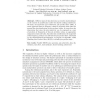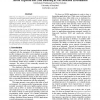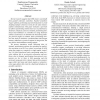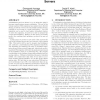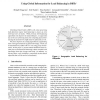CORR
2010
Springer
14 years 2 months ago
2010
Springer
Different types of data skewness can result in load imbalance in the context of parallel joins under the shared nothing architecture. We study one important type of skewness, join ...
IPPS
2000
IEEE
14 years 6 months ago
2000
IEEE
Networks of workstations are fast becoming the standard environment for parallel applications. However, the use of “found” resources as a platform for tightly-coupled runtime ...
IEEEPACT
2000
IEEE
14 years 6 months ago
2000
IEEE
Recent research suggests that DSM clusters can benefit from parallel coherence controllers. Parallel controllers require address partitioning and synchronization to avoid handlin...
CF
2010
ACM
14 years 7 months ago
2010
ACM
Supercomputers need a huge budget to be built and maintained. To maximize the usage of their resources, application developers spend time to optimize the code of the parallel appl...
WOSP
2010
ACM
14 years 7 months ago
2010
ACM
Virtualization has been shown to be an attractive path to increase overall system resource utilization. The use of live virtual machine (VM) migration has enabled more effective ...
SASO
2008
IEEE
14 years 8 months ago
2008
IEEE
Distributed Hash Tables (DHT) with order-preserving hash functions require load balancing to ensure an even item-load over all nodes. While previous item-balancing algorithms only...
ICDE
2008
IEEE
14 years 8 months ago
2008
IEEE
— In the context of adaptive query processing (AQP), several techniques have been proposed for dynamically adapting/redistributing processor load assignments throughout a computa...
IPPS
2009
IEEE
14 years 8 months ago
2009
IEEE
Power consumption is a very important issue for HPC community, both at the level of one application or at the level of whole workload. Load imbalance of a MPI application can be e...
IEEEPACT
2009
IEEE
14 years 8 months ago
2009
IEEE
Parallel programming is a requirement in the multi-core era. One of the most promising techniques to make parallel programming available for the general users is the use of parall...
